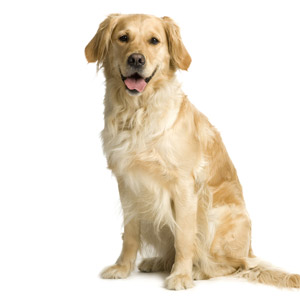
Labrador Retrievers have been within the top five most popular dog breeds for the last few decades, thanks to the fact that they make such incredible family pets. This is especially true for Yellow Labradors. To be perfectly honest, if you are the proud owner of a Black Labrador and are considering getting him a Yellow partner in crime, you are most likely already prepared for it. The color difference does not translate to behavioral differences, but Chocolates tend to be a bit higher strung than the other two colors. Regardless of the color of Lab that you choose, learning how to care for Labrador Retrievers is all the same.
Yellow Labs possess all of the celebrated traits of a family dog. This breed of dog is wonderful with people of all ages, which is a selling point for most families. These puppies are adorable and even at that young age, they interact well with children. Active and fun, they’re easily trained if an owner commits the proper time to training. They make great therapy dogs, service dogs, search-and-rescue dogs, and seeing-eye dogs. Only Golden Retrievers rival them in ability and popularity. Before you get your dog, or if you already have your puppy, here are a few things to teach you how to care for a Yellow Lab.
There are different kinds? Yes there are! If you are looking for something in particular it will be best for you to research online and in books. If you research online, you can find different breeders and you will be provided with pictures that will help you understand the differences.
Probably the most popular variety is the English Yellow Lab. Shorter and stockier, they often have a broad head and a shorter nose and are among the more beautiful Labs. The second variety is the average backyard breeder. While you can get an “average” puppy from a reputable breeder, remember that often these breeders don’t breed for size or looks, but rather for temperament, which is never a bad thing. Lastly, in your search you may find a variety called the pointing Yellow Lab. If you are an avid bird hunter, this dog might be your best choice. Labs are known as flushing dogs, but these are being bred to instinctively point. They are often taller and skinnier with a thin, lanky head, bred to look and move more like a setter. These pointing Yellow Labs will also take a little more out of your pocket, generally costing a minimum of $1000!
Once you’re comfortable selecting your dog, acquaint yourself with rules of basic dog health care.
 Feeding your Yellow Lab is not a hard task. A Labrador Retriever dog can thrive on just about any healthy dry dog food. It is always a good idea to consult your vet about what foods, but you should still strive to find the best pet nutrition for your particular dog. Canned foods are fine about once a week. Be warned, however: Labs gain weight very easily! They have no shame in mooching food from you. Notorious for raiding garbage cans when owners are not home, they aren’t known for being finicky eaters! So be cautious of the table scraps you feed them, unless you want to turn him into a Yellow coffee table.
Feeding your Yellow Lab is not a hard task. A Labrador Retriever dog can thrive on just about any healthy dry dog food. It is always a good idea to consult your vet about what foods, but you should still strive to find the best pet nutrition for your particular dog. Canned foods are fine about once a week. Be warned, however: Labs gain weight very easily! They have no shame in mooching food from you. Notorious for raiding garbage cans when owners are not home, they aren’t known for being finicky eaters! So be cautious of the table scraps you feed them, unless you want to turn him into a Yellow coffee table.- It is best to start training your Yellow Labrador Retriever from the time she is a small puppy. Never underestimate the importance of training your dog. Labradors are a very responsive breed; with a little bit of commitment from you, the owner, they will become the dogs of your dreams, friendly, healthy and dutiful. They are blessed with a natural desire to please their owners, so make sure you let them know, starting when they are puppies, how much you appreciate their good behavior. Dog obedience training should be successful with this breed.
You may want to consider enrolling yourself and your dog in a puppy training course, which is often referred to as kindergarten obedience class, where you’ll learn about dog training and how to interact with your puppy. The class will teach basic dog care and how to train yellow Labrador retriever puppies. The puppy information you learn will be invaluable, and your puppy will also have real life experiences learning proper ways to interact with other dogs and people.
- Labs are happier when they are at play. Active and playful, their tendency to gain weight can be prevented through regular exercise. Your dog would love to be walked every day, but if this does not fit into your schedule, try to play as often as you can. They love a game of fetch to release pent-up energy. If you have the resources, consider swimming as a good option, who famously love the water.
- They are healthy dogs and generally will live long lives of 10 to 14 years. Pet care for puppies is a must as they need several vaccinations. Regular veterinary check-ups need to continue throughout any dog’s life. Labs do tend to develop dry skin, which can be treated with special shampoos and a bath about every other week. If dry skin poses a particularly chronic problem for your dog, consult your vet for help.
Yellow Labs can become arthritic in old age. Try to make sure they are always comfortable and enjoy proper dog nutrition and exercise throughout life to maintain good health. Medications for pain can be purchased from your vet.
Lastly, they get dirty ears! Dog grooming is a must and thankfully, solving the problem requires little effort; cleaning solution and Q-tips are readily available for purchase. If you are not comfortable cleaning his ears, seek the instruction of your vet before cleaning.
- When acquiring a large dog, it’s always important to consider whether you plan to keep her outside or indoors. Labs are very versatile dogs. While not all large breeds of dogs will do well outside, a Lab will. These dogs are equipped with a very thick, dense coat meant for swimming in cold water. Consequently, they withstand the cold well, as long as you observe the proper housing precaution.
This breed requires a large enough dog house, where they can escape any and all breezes. Provide your dog with bedding such as straw, hay, and dog beds or blankets. These should always be kept fresh. If snow is common in your area, ensure that your dog always has fresh water that isn’t frozen. Heated water dishes prevent the water from freezing and can be found at any pet supply store. It is recommended that any outdoor dog live in a pen rather than on a chain; your dog can become tangled on a chain, or even strangle herself.
Despite the fact that Labs can live outdoors, they make great indoor pets as well if you’ll permit a little (or a lot) of shedding. There are many shampoos on the market to help with their type of coat, but none will totally prevent shedding. The best type of shampoo to buy is a dog shampoo that will not dry out the dog’s skin. When Labs have dry skin, itching will begin and it will lead to a host of new skin problems. Initially buy small quantities of shampoo until you determine which works best. Provide pet grooming daily by brushing your Lab and it will help with shedding. Once the shedding is under control, remember they love sleeping in bed with you and are easily house-trained!
We hope this article has provided you with informative tips. Hopefully you are now ready and eager to spend a long, happy life with your Yellow Lab, a wonderful addition to any family!
